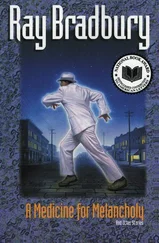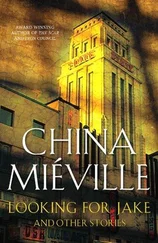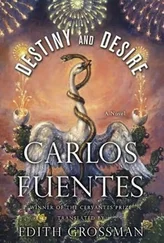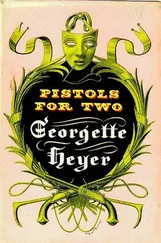The workers could be enticed by a miracle; for us, the lure was architecture, decoration, the art object, above all — were we still smiling? — those things coming together in a green porcelain frog that we saw for the first time in the bathroom of Catarina Ferguson, our unattainable love. Our banter, our self-absorbed thoughts while we drank our tea in silence, our emotional desire (every kind of desire) were all interrupted by new shouting in the construction zone, by the workers flying toward us like a flock of birds, advancing on our private belvedere, since we, the architects (artists? the grains or the brains? the glorified bricklayers?), were also the arbiters, and the dispute was this: the mother of one of the night workers, the watchman, in fact, whom we needed to keep an eye out for accidents, mud slides, thieves, the thousands of things that can happen at a project like this, anyway, she was bringing her son his dinner of lentil soup — the workers are very precise about their meals — with chicken, rice, and soft white cheese, and as she was making her way to the hut where her son spent the night, she ran into a little kid, maybe twelve years old, barefoot, sort of blond, she said, a cute little rascal, wearing just a short skirt, but the señora insisted it wasn’t a girl, it was a boy, she could tell, and she, the mother of fourteen, knew the difference: a luminous child, said the mother, if you could have seen it, a child who glowed, and if that doesn’t prove what is happening here, what more proof do they want, the heretics and unbelievers?
— The Child Jesus has appeared. It’s a miracle, I tell you it’s a miracle.
— Just a minute, madam. You say that you know it was a boy, and not a girl.
— It stuck out. It raised his skirt.
Deliver us from temptation. From our heights, we were not going to fall for a miracle. With Cervantesque irony, we could readily accept Don Quixote’s celebrated explanation of miracles to Sancho: “They are simply things that seldom occur…” Otherwise, they would be the norm, not the exception. Blessed Quixote, who has saved your children from the pangs of contradiction, you’re a little like Lenin for the Communists that way.
The fact is, without offending the popular faith of the workers who wanted the miracle, or the agnostic faith of the engineers who denied it, we would have to be the arbiters that both parties wanted.
To the workers we said: The engineers are unbelievers; let us investigate this, we promise we’ll be perfectly honest about it.
To the engineers, we explained with a wink (the ploy of conmen, for which we beg pardon) that if we didn’t decide in favor of belief, belief, as always, was going to decide against us. If word of this got out — the Child Jesus appearing in the construction site on Calle José María Marroquí, between this subway station and that pile of boulders — in less than twenty-four hours, just picture it, there’d be television crews, cameras, newsmen, reporters, opposition representatives hooked on religion and official representatives hooked on the secular rule of the Constitution but afraid of offending the simple faith of the people, et cetera, and all of them followed by crowds of the faithful, vigil lights, stalls, relics, balloons, lottery tickets, sweatshirts with the Sacred Heart, even a ferris wheel and Coca-Cola venders and pinwheels: is that what they wanted? It would cost them their jobs. Leave it to us.
— Ah, these architects. Always so nice and tactful! said the wisecracking engineer who had made the rhyme on Vélez and Pérez and who, but for a stroke of luck and a mistake in scholarship awards, would still be washing dishes in a tamale parlor.
We laughed at him, but not at ourselves. We spoke to the group of workers. You trust us? Grudgingly, they said yes; we were the most important-looking people on the job; reasonable people, they could see in us what, in the end, they always needed: masters they could respect — the bosses. Yes, yes, we trust you. Then, we trust you, too. It was hard, but we asked them to be silent about what the mother of one of them had seen.
— Doña Heredad Mateos, mother of our buddy Jerónimo Mateos, who is night watchman here.
— That’s okay, boys. And, Jerónimo, listen.
— Go ahead, sirs. Tell me.
— Say to your mother: If you tell anyone about this, Mama, the Child Jesus will never appear to you again.
Their faces said, are you kidding? yet they took us seriously; but we couldn’t help picturing the mamacita, Doña Heredad, getting back to her neighborhood, scattering the information from patio to patio, upstairs, downstairs, as you scatter seed for the birds.
Has your mama gone back home? No, boss, she was too excited, I got her to lie down on my cot. Well, leave her there, please, Jerónimo. But she can’t stay there all night, she’ll freeze to death. Why? There’s no glass in the window of the night watchman’s hut. Then we’ll put some in, so that the señora will be comfortable. But she mustn’t go back to her neighborhood. My mamacita has to work to live, was Jerónimo Mateos’s answer, and it sounded like a reproach. Then she can go on working, we told him, she can do it here, at the construction site. Really? She can? So, what does she do? Bridal gowns, boss. She repairs old bridal gowns. The rich women sell them when the dresses get old, and she mends them and sells them to poor brides.
— Then she can bring some outfits here to mend — we said, a little impatient at all the complications — but tell her not to accept any more work.
— Oh, each outfit takes her a month, at least. My mamacita is a very careful worker.
— And, above all, make sure nobody comes to visit her here.
— Only the Child Jesus, said her silly son Jerónimo Mateos, adding with a sigh, “This is what I get for being an unbeliever.”
We laughed at his parting shot and returned to our own work, satisfied that we’d smoothed things over on a project that had really gotten beyond us. The projects we worked on were precise; we worked on small areas, at an extremely slow pace (like Doña Heredad and her bridal outfits); our projects were adapted more to permanency than to haste. But word of the miracle forced us to move faster; we would have liked more calm, but that was a luxury we couldn’t afford if we wanted to avoid the damage a rumor can do, the eventual paralysis of the project; none of us can resist the temptation of a religious celebration; it’s our moment of respite in the middle of so many calamities.
8
Everything seemed pretty much back to normal when the engineers came to consult us about where to put the traffic signals, as their contract required them to do.
They looked at us with more animosity than usual, as if to say what the hell do these architects know about the best place to put a traffic signal in streets as congested as these, but we had insisted (we were throwing our weight around, it’s true) on a clause giving us a voice in all matters concerning the aesthetics of the work. A traffic signal, we maintained, is like a pimple on the face of a goddess; we couldn’t allow the constant blinking of tricolor lights to ruin the total effect.
We have to be practical, said the engineers. We have to consider beauty, we replied. Traffic will be even more congested, they said, exasperated. There were no automobiles in the eighteenth century, we said, half smug, half pedantic.
The engineers had done more than make up their minds, they had planted the first traffic light at the entrance to the project. We had no choice, they insisted. If the drivers don’t see this perpetual red light from a distance, they could make a mistake and drive into the project. Then we’d have to ask them to leave, it’d be a waste of time. You could put up a sign saying DO NOT ENTER, we said with a certain irony. Most of them are illiterate, said the poor engineers; better to rely on their reflex reaction to a red light. We were amused by these byzantine arguments. How many angels fit on the head of a pin? How many semi-literate drivers depend on an innate Pavlovian reflex?
Читать дальше












